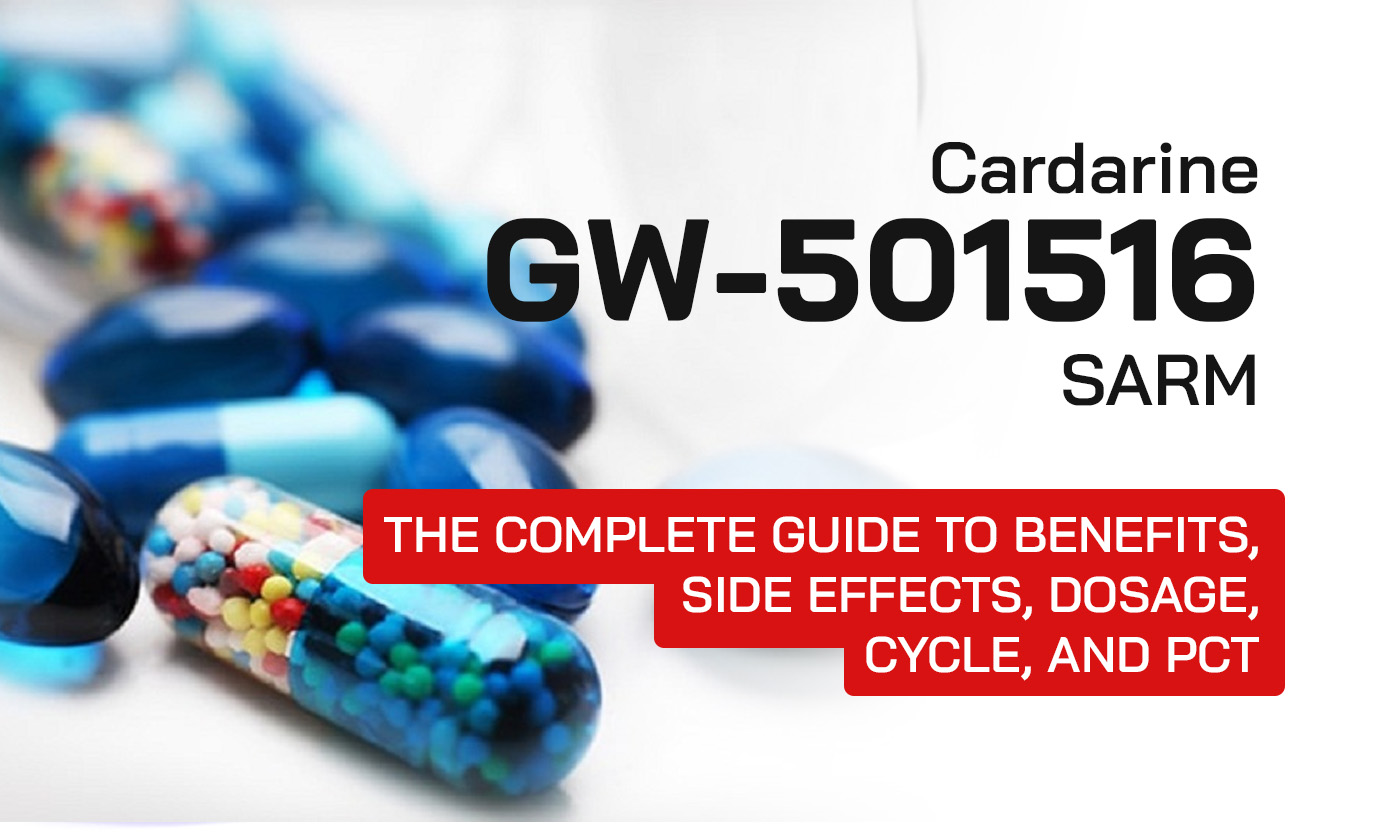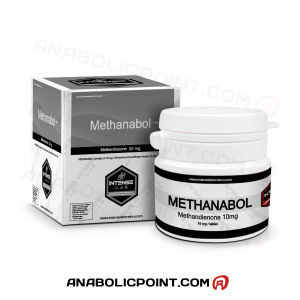Your basket is currently empty!
GW-501516 (Cardarine): The Complete Guide to Benefits, Side Effects, Dosage, Cycle, and PCT

GW-501516, also known as Cardarine, is a potent compound that has gained considerable attention in the fitness and performance enhancement world due to its ability to improve endurance, enhance fat loss, and increase energy levels. Despite its promising benefits, Cardarine also comes with a range of potential side effects and controversies. In this article, we will delve into everything you need to know about GW-501516, covering its history, how it works, its benefits and side effects, the ideal dosage, cycles, and Post Cycle Therapy (PCT). This guide is designed to provide you with a complete understanding of Cardarine and how to use it effectively.
What is GW-501516 (Cardarine)?
GW-501516, also known as Cardarine, is a chemical compound that belongs to a class of drugs called peroxisome proliferator-activated receptor delta (PPARδ) agonists. It was developed in the 1990s by the pharmaceutical companies GlaxoSmithKline (GSK) and Ligand Pharmaceuticals. Initially designed to treat metabolic diseases, cardiovascular disorders, and obesity, it was later discovered to have performance-enhancing properties, particularly in terms of fat loss and endurance.
Cardarine is not a steroid, but it is often used in the world of bodybuilding and athletics for its fat-burning and endurance-enhancing effects. It functions by interacting with the body’s PPARδ receptors, which are involved in regulating metabolism and fat-burning processes.
Cardarine has been used by athletes and bodybuilders to improve performance and accelerate fat loss. Despite its promising effects, it has been banned by many sports organizations due to concerns over safety, with the World Anti-Doping Agency (WADA) adding it to their list of prohibited substances.
History of GW-501516 (Cardarine)
Cardarine’s story begins in the 1990s when it was developed by GlaxoSmithKline (GSK) and Ligand Pharmaceuticals. Its initial purpose was to be a therapeutic drug for metabolic diseases, such as obesity and diabetes, as well as cardiovascular diseases. Researchers discovered that the compound had the potential to improve the body’s ability to burn fat and increase endurance.
The mechanism of action behind Cardarine was understood to involve its activation of PPARδ, a receptor that plays a key role in regulating lipid metabolism, insulin sensitivity, and energy homeostasis. By stimulating these processes, Cardarine showed promise in promoting fat loss, improving cardiovascular health, and enhancing muscular endurance.
Despite its early potential as a therapeutic drug, clinical trials revealed concerns about long-term safety. In 2007, research showed that Cardarine caused cancerous tumors in animal studies, which led to the suspension of its development. As a result, Cardarine never received approval for use in humans.
Despite the termination of clinical trials and its lack of approval for medical use, Cardarine has remained popular in the fitness and bodybuilding community due to its ability to improve performance and aid in fat loss. It is widely used in cutting cycles, where fat loss and muscle preservation are key goals.
How GW-501516 (Cardarine) Works Technically
Cardarine’s effectiveness is largely due to its ability to activate the PPARδ receptor. The PPARδ receptor is a type of nuclear receptor that plays a crucial role in regulating fat oxidation, glucose metabolism, and inflammation. This receptor is involved in the regulation of the body’s metabolic pathways, particularly those related to energy production and fat burning.
When Cardarine activates PPARδ, it stimulates several important processes in the body:
1. Increased Fat Oxidation and Fat Burning
By binding to the PPARδ receptor, Cardarine promotes the oxidation of fatty acids, increasing the body’s ability to burn stored fat for energy. This leads to fat loss, especially during periods of intense physical activity or a caloric deficit.
2. Enhanced Endurance and Energy Levels
Cardarine enhances the body’s ability to utilize fat as fuel, which means that muscles rely less on glycogen and more on fat for energy. As a result, it improves endurance and reduces fatigue during prolonged physical activity, allowing athletes and bodybuilders to train harder and for longer periods.
3. Improved Lipid Profile
Cardarine helps improve the body’s lipid profile by reducing triglycerides and increasing HDL (good cholesterol). This makes it potentially beneficial for cardiovascular health by lowering the risk of heart disease and improving overall heart function.
4. Increased Muscle Preservation
By increasing fat oxidation, Cardarine allows the body to preserve muscle mass even during periods of caloric restriction. This makes it an effective compound to use during cutting cycles where fat loss is the primary goal without sacrificing lean muscle.
5. Insulin Sensitivity Improvement
Cardarine has also been shown to improve insulin sensitivity, which helps the body better utilize carbohydrates for energy and promotes overall metabolic health. This can be particularly beneficial for individuals looking to optimize their body composition or manage metabolic conditions.
Benefits of GW-501516 (Cardarine)
GW-501516 (Cardarine) is primarily used for its fat-burning and endurance-boosting properties. The benefits of Cardarine extend to various aspects of health and performance, particularly in the realms of fat loss, athleticism, and cardiovascular health. Some of the key benefits include:
1. Fat Loss and Weight Management
Cardarine increases the rate at which the body burns fat, making it highly effective for fat loss. It enhances the body’s ability to oxidize fat as a source of energy, allowing users to burn fat more efficiently, especially during periods of exercise or caloric restriction.
2. Improved Endurance
By shifting the body’s energy reliance from glycogen to fat, Cardarine increases endurance and reduces the onset of fatigue during prolonged physical exertion. This makes it particularly beneficial for athletes involved in endurance-based sports.
3. Muscle Preservation During Cutting
Cardarine helps preserve lean muscle mass while promoting fat loss, making it an ideal supplement for cutting cycles. This dual effect is useful for bodybuilders who want to maintain muscle size while achieving a low body fat percentage.
4. Enhanced Cardiovascular Health
The compound has been shown to improve the lipid profile, reducing levels of bad cholesterol (LDL) and triglycerides while increasing good cholesterol (HDL). This helps improve heart health and may lower the risk of cardiovascular diseases.
5. Increased Energy and Stamina
Cardarine can also improve overall energy levels and stamina by increasing the body’s ability to burn fat for fuel. This allows users to train for longer periods and push harder during workouts, leading to better long-term performance improvements.
Side Effects of GW-501516 (Cardarine)
Although Cardarine offers many benefits, it also comes with potential risks and side effects. Some of the side effects include:
1. Cancer Risk (Animal Studies)
One of the biggest concerns surrounding Cardarine is its potential to cause cancer. Animal studies conducted in the early 2000s revealed that long-term use of the compound caused cancerous tumors in rats. However, it is worth noting that these results may not necessarily apply to humans, as animal studies do not always predict human outcomes.
2. Liver Toxicity
While there is no conclusive evidence that Cardarine directly causes liver damage, some users have reported symptoms associated with liver toxicity, such as fatigue and digestive issues. It is important to monitor liver health during any steroid or performance-enhancing compound cycle.
3. Increased Blood Pressure
Some users may experience an increase in blood pressure due to the compound’s effects on lipid metabolism and vascular health. It is important to monitor your blood pressure regularly when using Cardarine.
4. Possible Hormonal Imbalance
Although Cardarine does not interfere directly with the hormonal system like steroids do, its impact on metabolism and fat burning could lead to imbalances in the body if not used properly. Monitoring overall health and consulting a healthcare professional is advised.
5. Sleep Disruption
Some users report that Cardarine can cause sleep disturbances, including insomnia or restlessness. Reducing the dosage or timing the intake to earlier in the day may help alleviate this issue.
Dosage and Cycle for GW-501516 (Cardarine)
The typical dosage of Cardarine varies depending on the user’s goals, experience level, and tolerance. Below is a general guide for dosing:
1. Recommended Dosage
- Low Dose: 10-15 mg per day
- Moderate Dose: 20-30 mg per day
- High Dose: 40 mg per day (not recommended for beginners)
Cardarine is generally taken in a once-daily dose, but it can also be split into two doses if preferred. It has a half-life of around 16-24 hours, meaning a single daily dose is sufficient for most individuals.
2. Cycle Length
The typical cycle length for Cardarine is between 8 to 12 weeks. Longer cycles may increase the risk of side effects, especially considering the concerns about long-term usage.
Post Cycle Therapy (PCT) for GW-501516 (Cardarine)
Unlike anabolic steroids, Cardarine does not significantly suppress natural testosterone production. Therefore, it does not require a PCT in most cases. However, if you are stacking Cardarine with other performance-enhancing compounds (such as steroids), it may be necessary to incorporate a PCT to restore hormonal balance after the cycle.
10 Most Common Questions About GW-501516 (Cardarine)
1. What is GW-501516 (Cardarine) used for?
It is primarily used for fat loss, improved endurance, and enhanced athletic performance.
2. Is Cardarine safe to use?
While Cardarine has proven benefits, it is not without risks, including potential cancer risk based on animal studies.
3. How long does Cardarine stay in your system?
Cardarine has a half-life of 16-24 hours, so it remains in the body for about 2-3 days after the last dose.
4. Can women use Cardarine?
Yes, Cardarine is not androgenic and can be used by both men and women.
5. What is the best dosage for Cardarine?
A typical dosage ranges from 10 mg to 40 mg per day, depending on your experience and tolerance.
6. Can Cardarine be stacked with other steroids or SARMs?
Yes, it is commonly stacked with other performance enhancers like SARMs or steroids for enhanced fat loss and endurance.
7. What are the side effects of Cardarine?
Side effects can include liver toxicity, increased blood pressure, and sleep disturbances.
8. Does Cardarine cause cancer?
There is evidence from animal studies that Cardarine may cause cancerous tumors in rats, although human studies have not confirmed this.
9. How long should a Cardarine cycle last?
A typical cycle lasts 8-12 weeks, with a recommended dosage of 10-40 mg per day.
10. Do I need PCT after using Cardarine?
Cardarine does not require a PCT unless stacked with other performance-enhancing substances like steroids.
Conclusion
GW-501516 (Cardarine) is a powerful compound that offers significant benefits for fat loss, endurance, and cardiovascular health. However, its use comes with potential risks, especially in regard to long-term safety. It is essential to understand both the benefits and the risks associated with Cardarine before incorporating it into your fitness regimen. Always prioritize your health and consult with a healthcare provider before using any performance-enhancing compounds.












